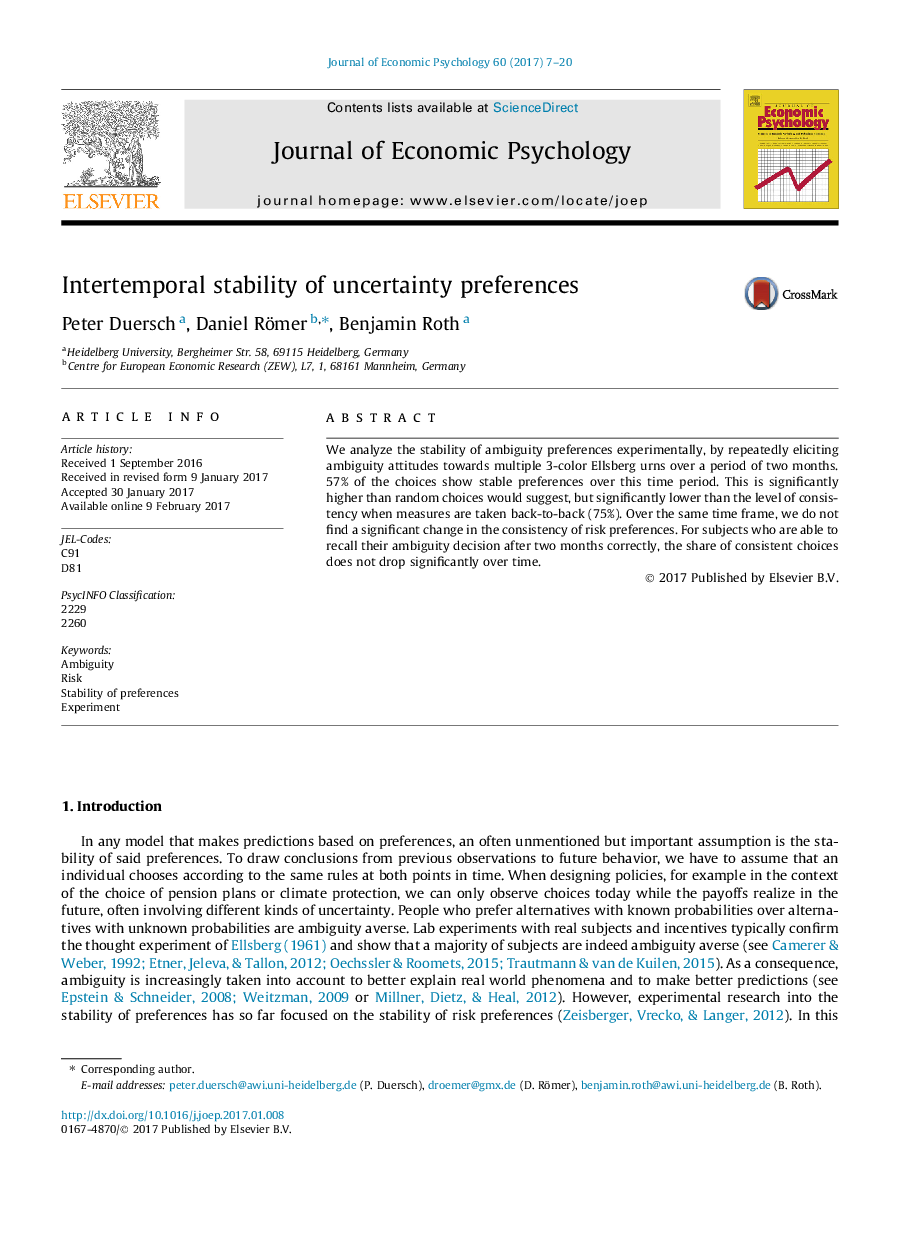| Article ID | Journal | Published Year | Pages | File Type |
|---|---|---|---|---|
| 5034749 | Journal of Economic Psychology | 2017 | 14 Pages |
â¢We test the temporal stability of uncertainty preferences in different settings.â¢In all settings, preferences are more stable than random behavior would predict.â¢A longer time lag between decisions does not affect stability in risk preferences.â¢A longer time lag between decisions decreases stability in ambiguity preferences.â¢Time effects are mitigated by the ability to recall past decisions.
We analyze the stability of ambiguity preferences experimentally, by repeatedly eliciting ambiguity attitudes towards multiple 3-color Ellsberg urns over a period of two months. 57% of the choices show stable preferences over this time period. This is significantly higher than random choices would suggest, but significantly lower than the level of consistency when measures are taken back-to-back (75%). Over the same time frame, we do not find a significant change in the consistency of risk preferences. For subjects who are able to recall their ambiguity decision after two months correctly, the share of consistent choices does not drop significantly over time.
